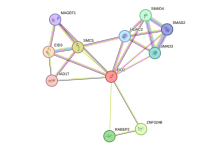What is the Most Effective Meditation Technique?
There is no single best meditation technique. Instead, you’ll find techniques that best serve specific needs. What these approaches have in common is an ability to heighten awareness amid stressful circumstances. Thus, you are still able to focus even when your senses seem dull. You can learn more about the best meditation techniques at Learn Inner Peace or by reading on.
The Different Types of Meditation
If you’re looking to get into a meditative state, any of the following is bound to align with your needs:
1. Progressive Relaxation
Sometimes called body scan meditation, progressive relaxation focuses on the meditator’s specific areas of stress and tension. Once these tensions are felt or noticed, practitioners are encouraged to release them from their systems.
The approach calls for focusing on one area at a time, releasing the pressure there, and moving on to another area. It is usually recommended to start from the bottom and move up.
In another form of this technique, one is required to tense and relax the muscles until one feels a release of negative energy. You can do it by visualizing a sweeping wave washing over your body and taking with it all of the tension.
Progressive relaxation promotes feelings of relaxation and calmness. It may also contribute to chronic pain relief and feelings of sleepiness.
2. Loving-Kindness Meditation
Metta meditation is another name for this compassion-fueled meditative form. It requires a practitioner to remove all thoughts of stress, including enemies and difficult circumstances, from his mind.
As a person takes a deep, focused breath, he is encouraged to open his mind to love and kindness. These can be messages he comes up with within his head—messages that detail his positive qualities and the things in life he has to live for.
It can be encouraging and inspiring words from loved ones alive or departed. The key is to remind oneself that beautiful messages abound more than hateful ones.
To drown hate with love and kindness is the goal of this approach. You need to repeat the message over and over until it becomes not only a reminder but an attitude.
3. Mindfulness Meditation
Awareness and a focus on the present are what fuel this meditative force more than any other. Mindfulness meditation requires you to let go of past demons and future uncertainties to fully embrace what the present has to offer. That means a lack of judgment is key to getting the approach right.
You must free yourself of the anxiety-filled wait and depressive lookbacks that tend to occupy most of your time and consume so much of your energy. And while you can sit there and wait, let the wait be without judgment.
One of the best things about mindfulness meditation is it’s the most free-flowing of all approaches. Many can do it from anywhere and under any circumstance. Beginners can try it without too much difficulty. One simply needs to attune himself to his senses and let go of whatever else is plaguing his mind.
A common denominator in most meditative forms is mindfulness. Thus, every approach will always have this element in one way or another. You can say it serves as the stepping stone to other meditation disciplines, though it doesn’t necessarily require your learning it first.
4. Breath Awareness Meditation
Breath awareness meditation puts emphasis on mindful breathing. Practitioners are encouraged to breathe deeply and slowly, focusing on each inhale and exhale as if they were one with the process. This brings a level of focus on breathing that disregards other functions.
Hence, your mind becomes your lungs, whose primary focus is feeding your body oxygen and ridding it of carbon dioxide. Negative thoughts, or thoughts in general, are laid by the wayside as you become one with your breathing.
5. Zen Meditation
Zen meditation, or Zazen, as it’s often called, is a Buddhist form of meditation that dates back to the ages of the ancient monks. This mostly teacher-student meditation model is one that involves various steps and instructions.
It requires you to find a comfortable space where you can focus on mastering breathing techniques and observing your thoughts without judgment. In this regard, it works in much the same way as mindfulness meditation, but it requires more discipline and focuses to maintain.
Where mindfulness meditation can align with a beginner’s needs, Zen meditation should be at least within an intermediate or expert meditator’s level of mental fortitude.
How Long Should You Expect Things to Click?
A discipline such as mindfulness meditation might not take long to get the hang of, but other disciplines could require more patience. You can use the mindfulness approach as an introduction to the other disciplines should that prove the easier path. That does tend to be the case for most practitioners, as mindfulness covers several of the basic aspects of its counterparts.







